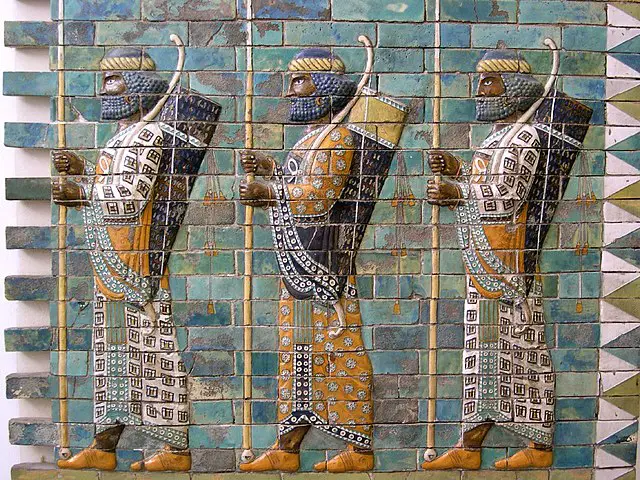Why Ancient Persian Warriors Wore High Heels
If your image of high heels involves red carpets, runways, or maybe an overpriced brunch in Soho, it’s time to rethink things. Because the first people to rock heels? Persian horse archers. And they did it to kill more efficiently.
Blood, Bows, and Heels
Let me take you back to the 10th century. You’re galloping across the Iranian plateau, wind howling past, bow drawn tight, scanning the horizon for enemies. And what’s keeping your feet locked into those stirrups during a high-speed turn? A heel. A small, sturdy one, made of leather or wood.
Persian cavalry needed something that would anchor their feet during battle. These were warriors, not catwalk models. They weren’t strutting. They were shooting arrows while riding at full speed. A raised heel gave them better leverage in the stirrups, letting them stand up and shoot with deadly accuracy. It wasn’t fashion. It was function.
High heels were born in blood and dust, not boutiques.
The Look That Conquered Europe
Eventually, Persian culture made its way into Europe, especially during the 17th century. European aristocrats, always looking for ways to peacock their power, saw Persian heels and thought: Yes, this is exactly the kind of impractical detail we can use to show off our wealth. If you can barely walk in your shoes, it means you’re rich enough not to need to work.
Louis XIV of France took this to a royal extreme. He wore red-heeled shoes as a status symbol. Only people in his court could wear them. If your heels were red, you weren’t just stylish. You were powerful. Honestly, it was more exclusive than any luxury brand today.
So yes, Persian horse archers indirectly helped invent the idea of designer shoes.
Masculinity, Remixed
Here’s the fun part: high heels didn’t start as women’s fashion. For centuries, they were all about military prowess and elite male fashion. It wasn’t until the 18th century that women started adopting the style and reshaping its meaning. Men eventually dropped them, possibly because once something becomes associated with women in patriarchal societies, it magically stops being seen as powerful.
So the next time someone snickers at a guy in heels or suggests they’re not “manly,” maybe remind them that heels were originally a weapon of war. Literally.
From Battlefield to Boutique
By the time the 1800s rolled around, heels had become almost entirely a women’s fashion item in Europe. They got narrower, taller, and more decorative. They lost their military roots and became associated with posture, sexuality, and yes, sometimes pain.
But it’s kind of wild to realize that stilettos have an ancestor in a Persian cavalry boot. One was made to stabilize your shot during a gallop. The other? Mostly made to make you look taller in a club bathroom mirror. Still, there’s a through-line: heels signal something. Power. Style. Command of attention.
Why It Still Matters
Knowing this changes how you look at history. It reminds us that fashion isn’t shallow. It’s layered. It carries stories of migration, war, identity, and reinvention. A heel isn’t just a heel. It’s a piece of armor, a social signal, and sometimes a political statement.
So the next time you see someone strutting in heels, whether it’s a drag queen, a businessman, or your friend at brunch, remember: they’re walking in the footsteps of ancient warriors.
Sources:
1. Smithsonian Magazine – Origins of High Heels
2. Smithsonian Magazine – The First High Heels Were Designed For Men
3. Fashion History – High Heels

